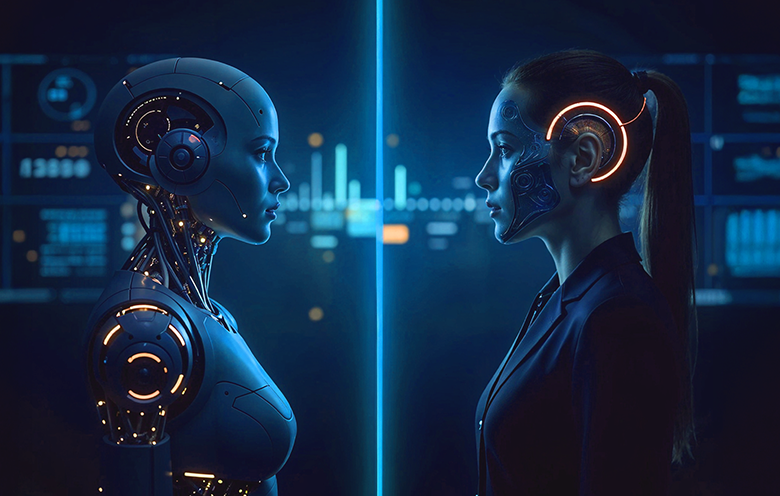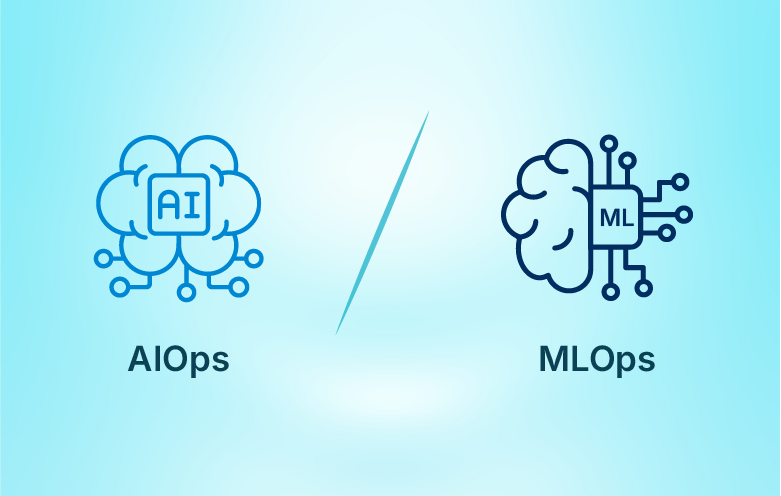AI agents vs. AI assistants: Functions, differences, and when to use each
AI agents and AI assistants come from the same team – the AI team. While they have the same foundation, their capabilities vary, so they take on different roles.
If you bring them on your team, they will manage the following for you.
An AI agent will work like a project manager. You give it a goal, and it will figure out the steps to get there. It can plan tasks, assign responsibilities (even to other AI tools), track progress, and make decisions along the way. It will work independently and won’t need you to guide every move.
An AI assistant will work like a personal assistant. You provide prompts and it will follow them rigorously. It will manage everyday tasks such as scheduling meetings, writing emails, and taking notes. It will be fast, reliable, and always ready to help.
Together, AI agents and AI assistants complement each other, one focuses on goals, the other on tasks.
Let’s understand their functions, benefits, and key differences so that you can pick the right AI system for your respective business requirements.
What are AI agents?
AI agents are software programs or systems designed to autonomously perform tasks or make decisions based on their environment or input. They can act in a manner that mimics human intelligence and behavior to achieve specific goals.
The purpose of an AI agent is to automate decision-making, enhance efficiency, and improve outcomes. And its primary functionalities are reasoning, problem-solving, interacting with external environments, and executing actions.
For instance, an AI agent for healthcare can analyze medical images like X-rays and MRIs to detect early signs of diseases such as cancer and recommend follow-up tests or treatments.
There are two major categories of AI agents:
- Reactive agents: They respond to inputs based on predefined rules and patterns.
- Learning agents: They use machine learning algorithms to improve their performance and decision-making over time by learning from experience.
How do AI agents work?
AI agents work by combining several key components:
1. Goal initializing and planning: AI agents rely on human-defined goals and rules, influenced by the development team, deployment team, and the end user. Once given a goal, the agent breaks it into tasks and plans how to achieve it. For simple tasks, the agent can learn from past actions without needing detailed planning.
2. Reasoning using available tools: AI agents use external tools like web searches, databases, and other agents to gather missing information. They update their knowledge base and adjust their plan. It helps agents to make more informed decisions and combine insights from different sources to solve complex problems.
3. Learning and reflection: AI agents improve with consistent feedback from users and other agents. This feedback helps them refine their actions and adapt to user preferences over time. Using iterative refinement, agents avoid repeating mistakes and improve performance on future tasks.
What are AI assistants?
AI assistant, also known as a virtual assistant, is a smart system that helps users with their everyday tasks through natural language processing and user commands. It can manage repetitive, simple, time-consuming tasks such as answering queries, sending emails, creating and managing schedules, setting reminders, and more.
AI assistants are reactive, directly responding to specific user prompts. They rely on pre-programmed rules and algorithms to carry out these actions efficiently.
Some examples are Apple’s Siri, Amazon’s Alexa, and Google Assistant.
How do AI assistants work?
AI assistants operate using a combination of Natural Language Processing (NLP), rule-based logic, and also machine learning to understand and execute user commands.
Here’s how they function:
1. Understand commands: AI assistants interpret spoken or written input to identify the user’s intent and extract relevant details like time, date, or context.
2. Execute tasks: Once the intent is recognized, they then follow predefined logic or workflows to carry out tasks such as sending emails, setting reminders, or fetching information.
3. Provide immediate, contextual responses: After completing a task, they deliver clear and concise feedback to the user, often in a conversational tone.
4. Improve personalization (in some cases): Some AI assistants can learn user preferences and adjust their responses or suggestions accordingly, though their learning is usually limited to specific tasks.
Detailed comparison between AI agents and AI assistants
As AI becomes more embedded in how businesses operate, learning how they are different helps in making the best of them. Let’s understand.
1. Autonomy
AI agents are built to operate independently after setup. For instance, in banking, a fraud detection agent continuously scans transactions and acts without human oversight. The autonomy makes them ideal for high-stakes, dynamic environments where quick, unsupervised decisions are essential to prevent failures or optimize processes.
AI assistants, like Siri or Google Assistant, require user prompts to act. They can’t initiate tasks on their own and respond only to specific commands. While they may perform some actions automatically (like reminders), they primarily serve as reactive tools that assist with individual tasks on demand.
2. Functionality
AI agents excel in complex, goal-driven environments. They’re used in areas like logistics, robotics, or trading, where they break down large objectives into tasks, coordinate with other systems, and adjust in real-time. Their functionality is task-specific and often deeply embedded in operational workflows.
AI assistants handle personal or office productivity tasks. They answer questions, manage schedules, or control smart devices. Their general-purpose design makes them great for helping individuals or teams with repetitive, routine, or time-consuming tasks. They boost efficiency without requiring deep system integration.
3. Interaction
AI agents don’t usually interact with people. Instead, they connect with tools, machines, or software to analyze input and act. For example, an agent in an autonomous drone communicates with onboard sensors and navigation systems—not the user—to make real-time decisions.
AI assistants are built for direct interaction with humans. They use natural language processing to understand spoken or typed input, then respond conversationally. Whether it’s booking a meeting or answering a question, their main role is to communicate clearly and assist the user.
4. Learning and adaptation
AI agents are designed as learning systems. They improve performance over time using reinforcement learning, feedback loops, or environmental analysis. For example, a warehouse AI agent learns to navigate more efficiently based on previous errors or obstacles it encounters during operations.
AI assistants also adapt, but mostly in user-facing ways. They might learn your preferred meeting times, reminders, or frequent contacts. However, their learning is typically focused on personalization rather than autonomous problem-solving or adapting to complex environments.
5. Technology
AI agents use a mix of technologies like computer vision, reinforcement learning, and multi-agent coordination. For example, in manufacturing facilities, AI agents analyze real-time sensor data to detect defects in production lines. They can identify flaws in materials, predict maintenance needs, and adjust processes to avoid costly downtime—all autonomously.
AI assistants rely heavily on natural language processing and speech recognition. They often connect to cloud services or APIs to access data—like weather, calendars, or search results. Their strength lies in user interaction and integration with everyday applications, not autonomous decision-making.
Some more differences between AI agents and AI assistants
When agents take charge, assistants lend a hand. Let’s explore the fine line between autonomy and assistance.
| Aspect | AI agents | AI assistants |
|---|---|---|
| Purpose | Designed to autonomously plan, reason, and execute complex tasks | Built to assist users in performing everyday tasks |
| Autonomy | High – can operate without human input and make decisions independently | Moderate – requires user input and works within predefined limits |
| Connectivity | Connects to multiple systems, tools, and agents to gather information, process data, and complete tasks | Primarily interacts with a single system or user, with limited integration with other tools or agents |
| Task complexity | Handles complex, multi-step tasks that require reasoning, decision-making, and adjustments based on new information | Focuses on simpler, routine tasks that don’t require complex decision-making |
| Decision making | Makes informed decisions based on data analysis, context, and prior learning. Also, uses multiple tools to complete goals | Provides responses based on user input, following a predefined set of rules or guidelines |
| Learning | Continuously learns from feedback and past interactions to improve performance and adapt to new circumstances | Learns user preferences and improves over time, but typically within a limited scope |
| Interactivity | Interacts with other agents, systems, and tools to achieve broader tasks, becoming highly adaptable | Primarily interacts with users to fulfill specific requests |
| Real-world examples | Needle AI agents and Salesforce Agentforce | Apple’s Siri, Amazon Alexa, and Google Assistant |
| Use cases | Workflow automation, predictive analytics, data processing, supply chain optimization, and decision support | Personal productivity, managing schedules, answering queries, controlling devices, and offering basic customer support |
| Tools | Uses advanced tools like APIs, databases, machine learning models, and external agents to complete tasks | Typically integrates with calendars, messaging apps, and smart home devices to assist with simple tasks |
| Technology | Relies on advanced AI techniques such as machine learning, reasoning, and planning to complete complex tasks autonomously | Primarily uses Natural Language Processing (NLP) and voice recognition to understand and respond to user requests |
| Scalability | Highly scalable, capable of handling large volumes of data, tasks, and complex operations across various systems | Scalable, primarily for personal use cases or simple organizational tasks, often constrained by available integration with devices or systems |
AI agent vs AI assistant: When to choose what
Choosing between AI agents and AI assistants requires an understanding of their respective strengths and limitations. Each type of AI suits different tasks within your organization and recognizing when and how to deploy them can unlock substantial value and efficiency.
Do choose AI agents to
- Automate business tasks (e.g., supply chain, inventory management)
- Analyze data (e.g., customer insights, market trends)
- Manage workflows (e.g., report generation, data processing)
- Make decisions automatically (e.g., logistics, financial optimization)
- Handle high-volume customer interactions (e.g., chatbots for customer service)
Do not choose AI agents for
- Tasks needing human judgment or creativity (e.g., complex strategies)
- Managing customer relationships (e.g., account management, negotiations)
- Situations requiring deep understanding (e.g., crisis management)
- Legal or ethical decisions (e.g., legal advice, compliance issues)
Do choose AI assistants to
- Help employees be more productive (e.g., scheduling, task management)
- Support customer service (e.g., answering questions, providing information)
- Assist with sales (e.g., finding leads, following up)
- Personalize marketing (e.g., product recommendations)
- Improve internal communication (e.g., reminders, team coordination)
Do not choose AI assistants for
- Complex business decisions (e.g., mergers, big negotiations)
- Tasks requiring emotional intelligence (e.g., conflict resolution, HR)
- High-risk operations (e.g., manufacturing, critical systems)
The future is collaborative: Humans and AI
The future is collaborative because AI will work alongside us.
While AI assistants handle repetitive tasks, giving us the freedom to innovate, AI agents will take on complex, data-heavy decisions that enhance outcomes.
Together, let’s break through the boundaries of individual effort so that we can create a synergy where both human ingenuity and AI capability complement each other. And ultimately, we can grow with new approaches, better solutions, and results we couldn’t have imagined alone.
Need Help ?
We are here for you
 May 7, 2025
May 7, 2025


